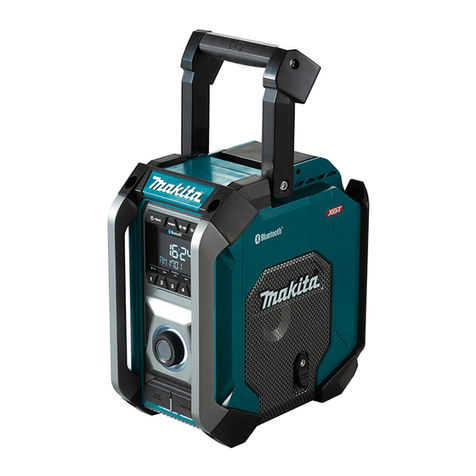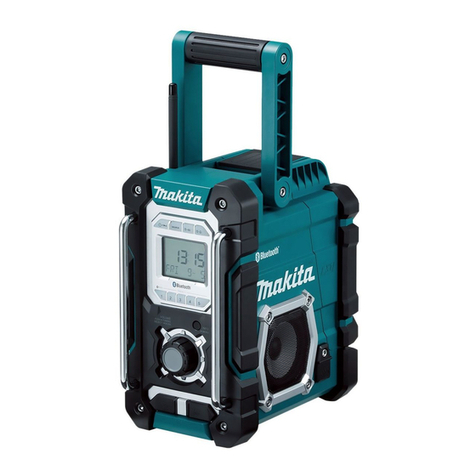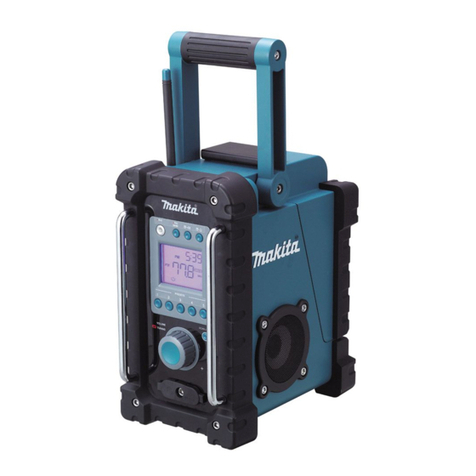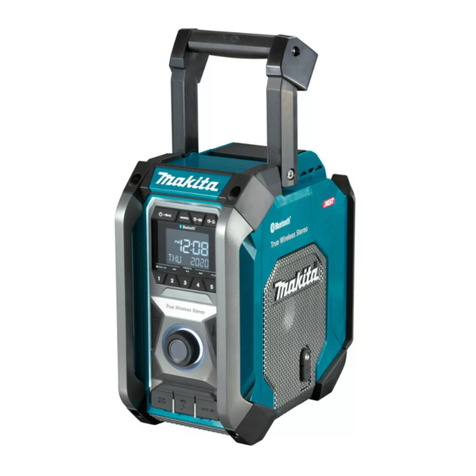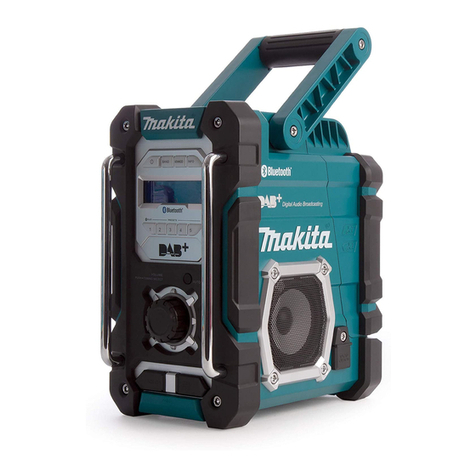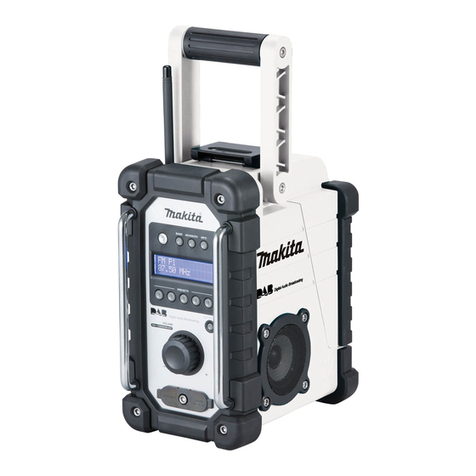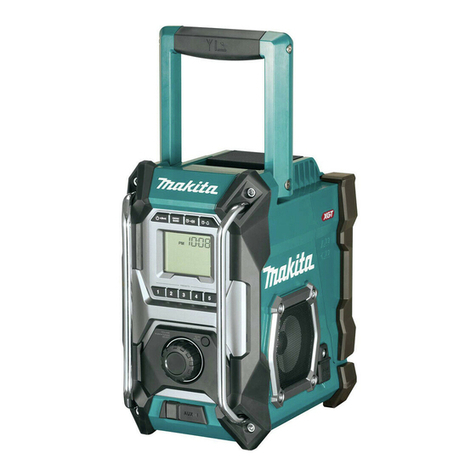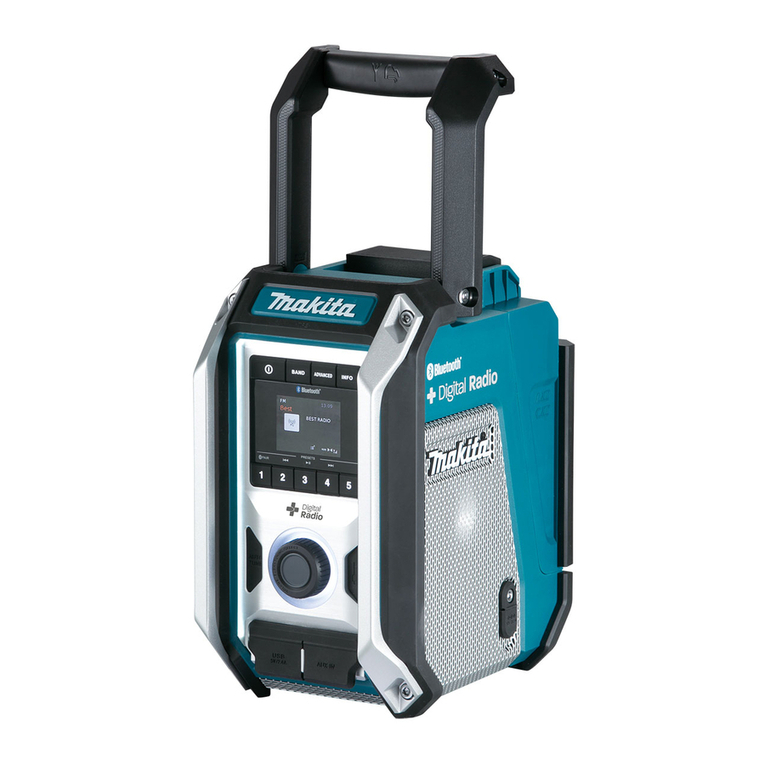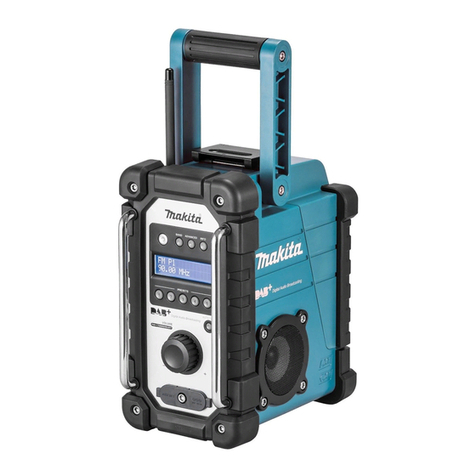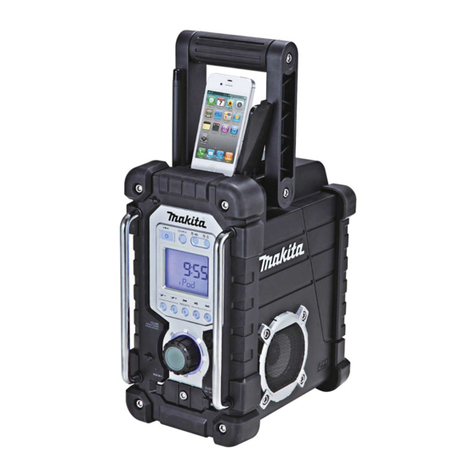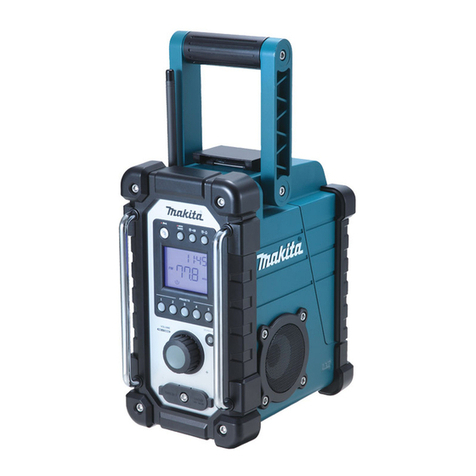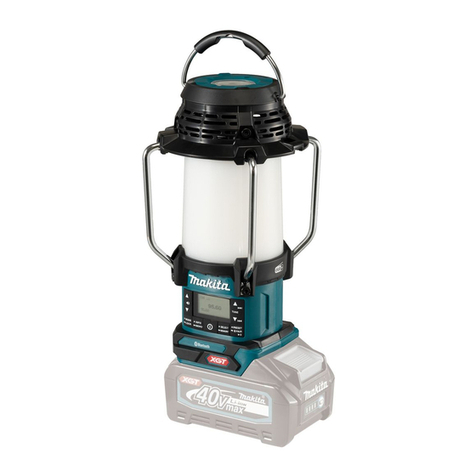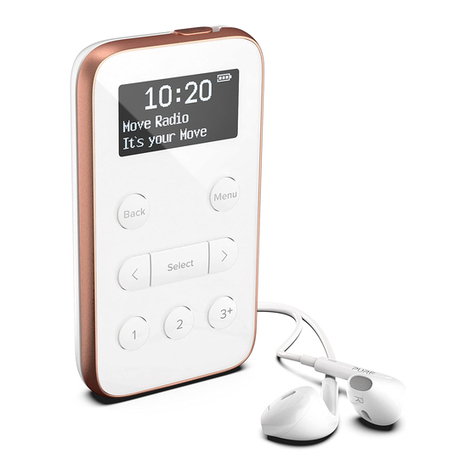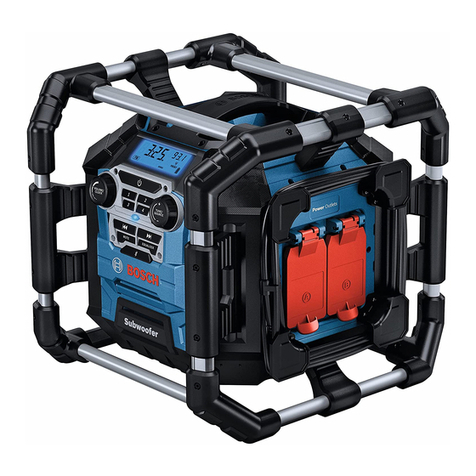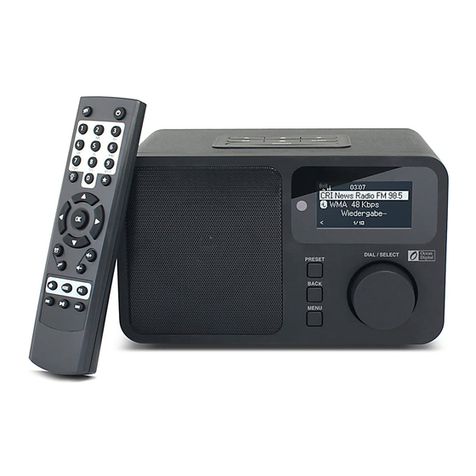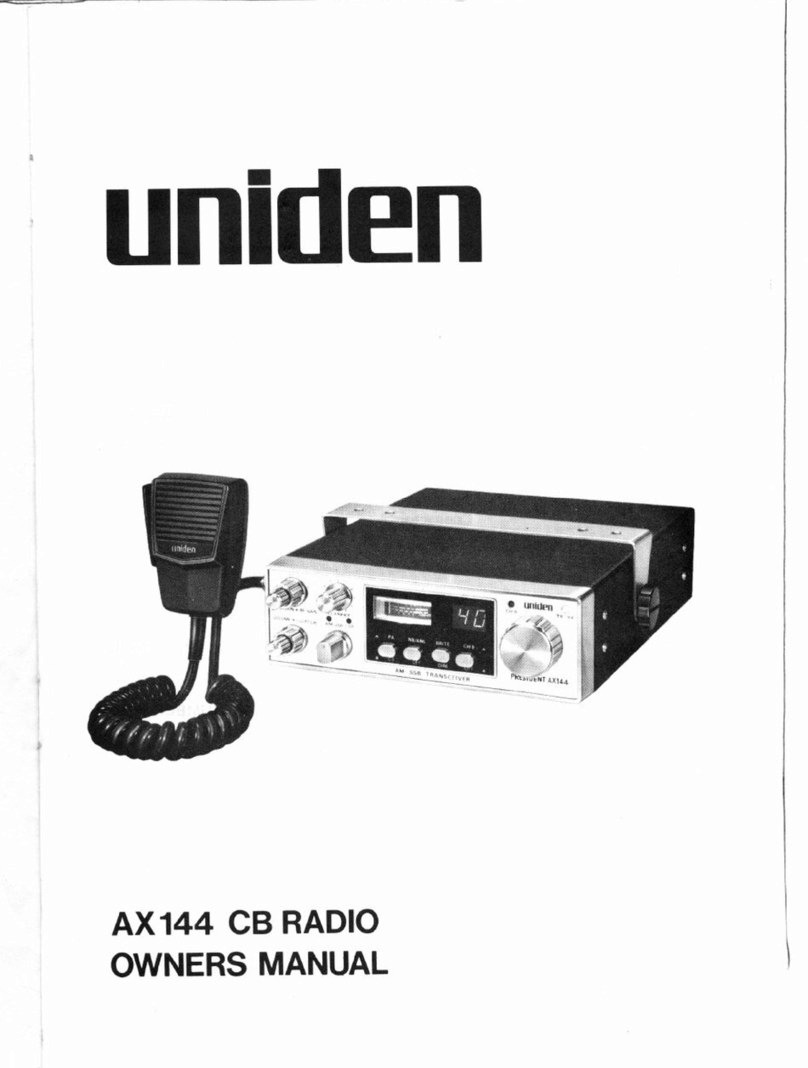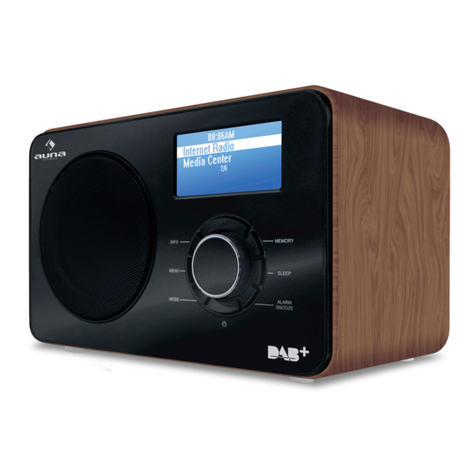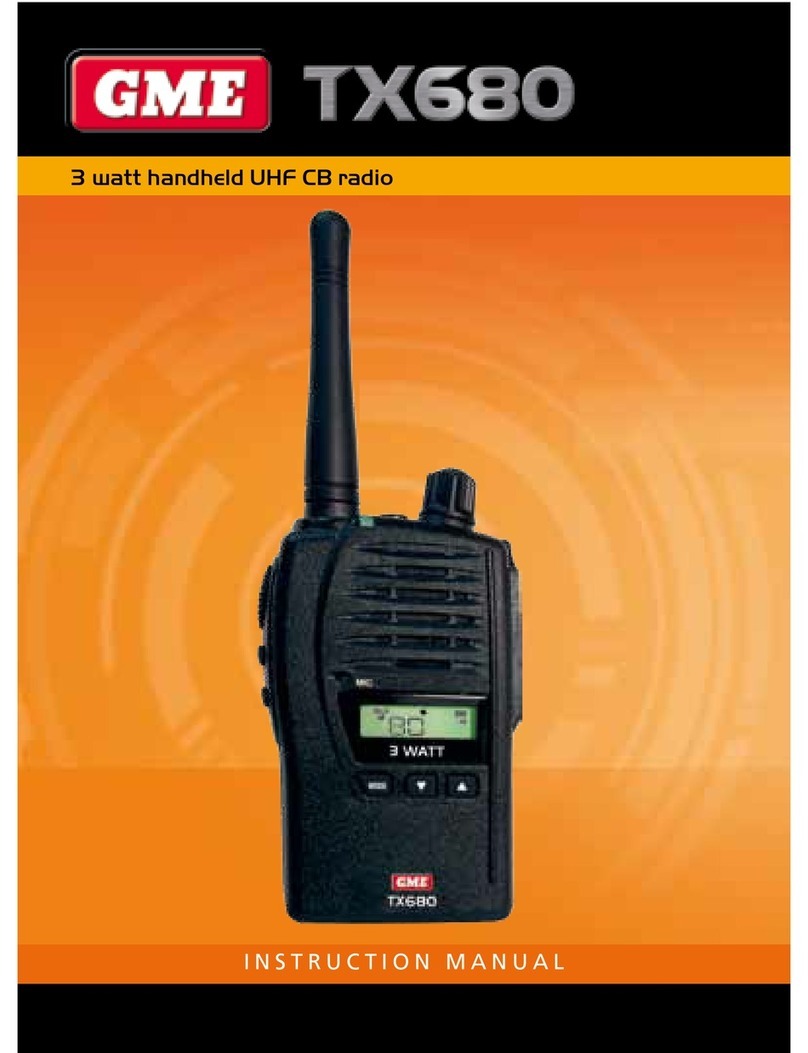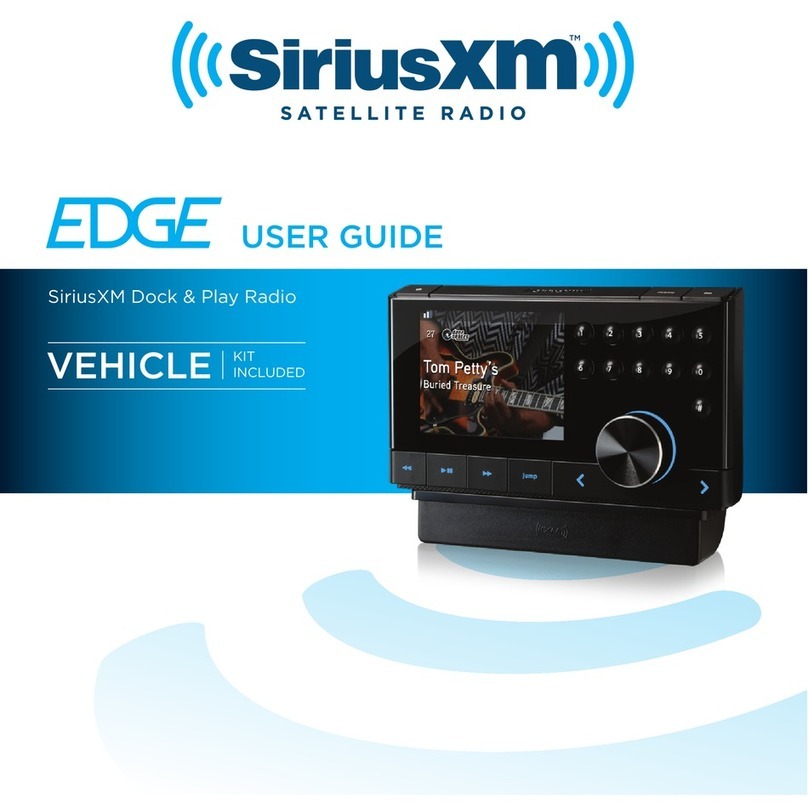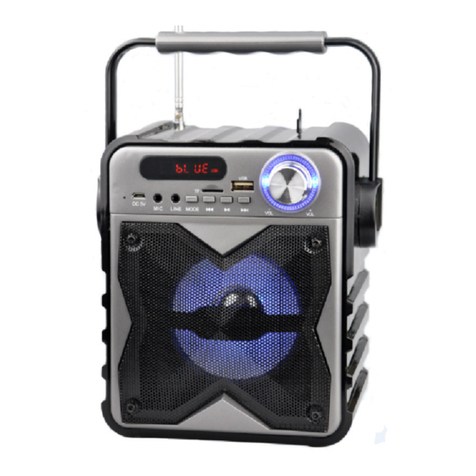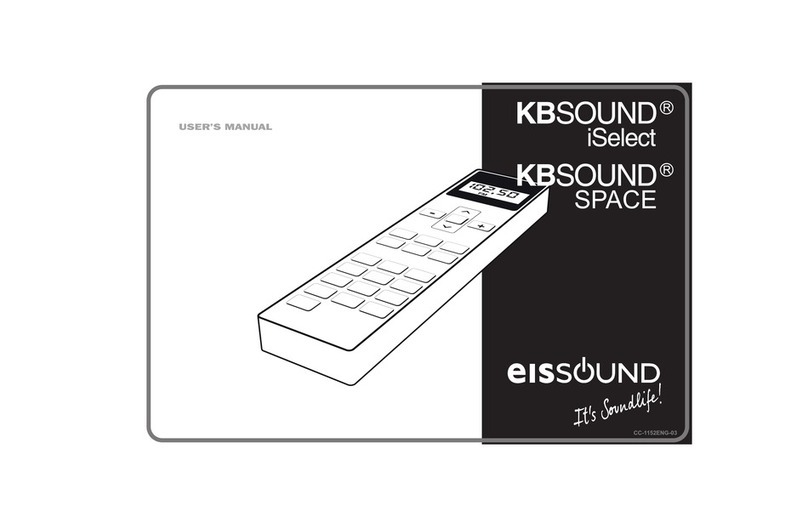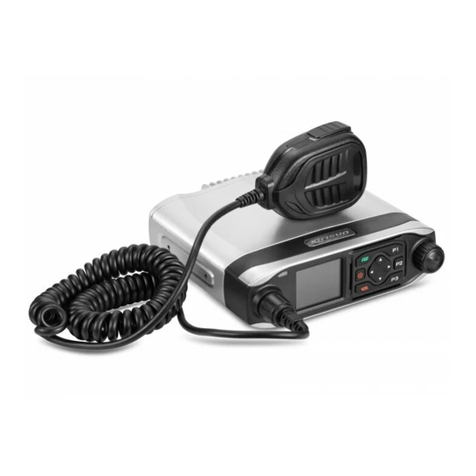
8ENGLISH
7. Use battery operated radio only with specif-
ically designated battery packs. Use of any
8. When battery pack is not in use, keep it away
from other metal objects like: paper clips,
coins, keys, nails, screws, or other small metal
objects that can make a connection from one
terminal to another. Shorting the battery ter-
minals together may cause sparks, burns, or a
9. Avoid body contact with grounded surfaces
such as pipes, radiators, ranges and refrig-
erators. There is an increased risk of electric
shock if your body is grounded.
10. Under abusive conditions, liquid may be
ejected from the battery; avoid contact. If
If liquid contacts eyes,additionally seek med-
ical help. Liquid ejected from the battery may
cause irritation or burns.
11. Do not use a battery pack and radio that is
Doing so may exhibit
12.
excessive temperature.-
perature above 130 °C(266°F) may cause explosion.
13. Follow all charging instructions and do not
charge the battery pack or tool outside the
-
tions. Charging improperly or at temperatures
14. The MAINS plug is used as the disconnect
device. The MAINS plug shall remain readily
operable.
15. Do not use the product at a high volume for
any extended period. To avoid hearing damage,
use the product at moderate volume level.
16. LCD displays include liquid which may cause
irritation and poisoning. If the liquid enters the
eyes, mouth or skin, rinse it with water and call a
doctor.
17. Do not expose the product to rain or wet con-
ditions. Water entering the product will increase
the risk of electric shock.
18. This product is not intended for use by per-
sons (including children) with reduced phys-
ical, sensory or mental capabilities, or lack
of experience and knowledge, unless they
have been given supervision or instruction
concerning use of the product by a person
responsible for their safety. Children should be
supervised to ensure that they do not play with
the product. Store the product out of the reach
of children.
19.
opening and closing the battery cover.
20. Return the battery compartment locker to the
original position, after installing or removing
battery pack. If not, battery pack may accidentally
-
one around you.
21. Always close and lock the battery compart-
ment locker before moving the radio.
22. When the radio is powered from the battery,
-
tery pack.
23.
Be careful not to drop or strike the radio.
body. Damaged radio may exhibit unpredictable
24.
person using only identical replacement parts. This
will ensure that the safety of the product is maintained.
25. Do not modify or attempt to repair the appli-
ance or the battery pack except as indicated in
the instructions for use and care.
Important safety instructions for
battery cartridge
1. Before using battery cartridge, read all instruc-
tions and cautionary markings on (1) battery
charger, (2) battery, and (3) product using
battery.
2. Do not disassemble or tamper with the battery
cartridge.
or explosion.
3. If operating time has become excessively
shorter, stop operating immediately. It may
result in a risk of overheating, possible burns
and even an explosion.
4. If electrolyte gets into your eyes, rinse them
out with clear water and seek medical atten-
tion right away. It may result in loss of your
eyesight.
5. Do not short the battery cartridge:
(1) Do not touch the terminals with any con-
ductive material.
(2) Avoid storing battery cartridge in a con-
tainer with other metal objects such as
nails, coins, etc.
(3) Do not expose battery cartridge to water
or rain.
A battery short can cause a large current
breakdown.
6. Do not store and use the tool and battery car-
tridge in locations where the temperature may
reach or exceed 50 °C (122 °F).
7. Do not incinerate the battery cartridge even if
it is severely damaged or is completely worn
8. Do not nail, cut, crush, throw, drop the battery
cartridge, or hit against a hard object to the
battery cartridge. Such conduct may result in a
9. Do not use a damaged battery.
10. The contained lithium-ion batteries are subject
to the Dangerous Goods Legislation require-
ments.
For commercial transports e.g. by third parties,
forwarding agents, special requirement on pack-
aging and labeling must be observed.
For preparation of the item being shipped, consult-
ing an expert for hazardous material is required.
Please also observe possibly more detailed
national regulations.
